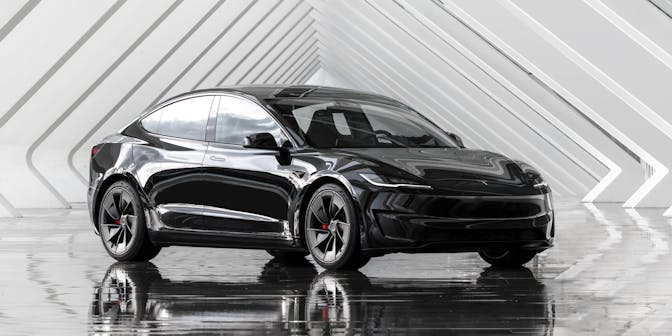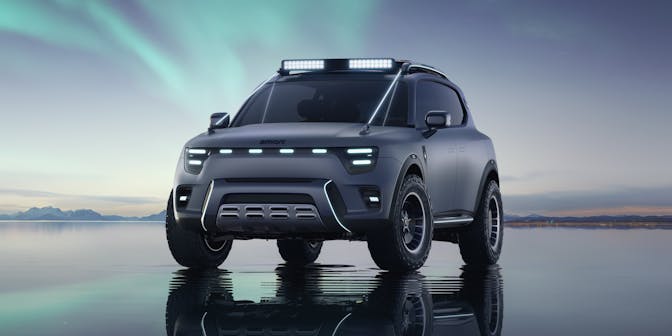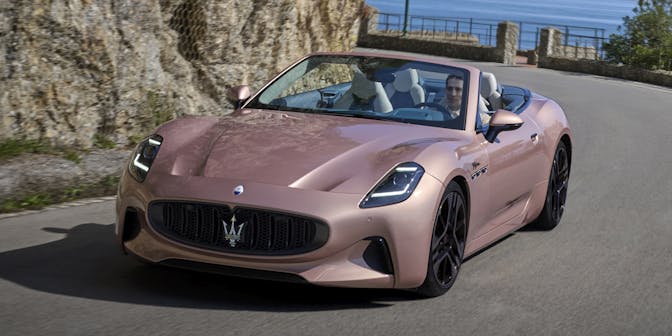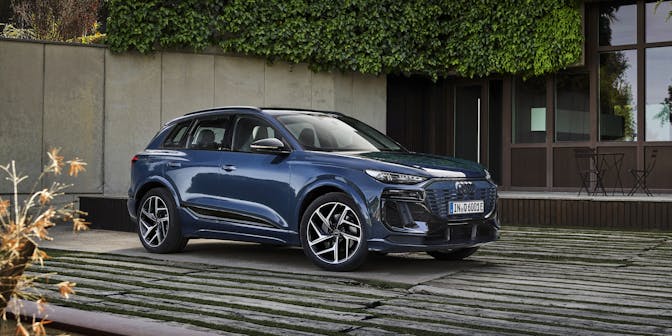Citroen oli concept – reversing the trend for heavier cars
Citroen prove their moral dedication to sustainability with their innovative approach to the use of oil.
Citroen introduced the Cactus in 2014, which gave hope that the brand was due to embark on a path to bring innovative lightweight cars to market. Unfortunately when the Cactus was revised, it lost most of its character and uniqueness.
However it looks like Citroen may have finally rediscovered its brand differentiation: lightweight and innovative design is back, this time in the form of the Citroen oli (pronounced ‘all-e’).
The Citroen oli is an EV – a family car with a similar footprint to a compact SUV – with a lightweight, sustainable and affordable design philosophy. This results in the expectation that the oli will be able to achieve a driving range of up to 248 miles, even though it only has a relatively small 40kWh battery.
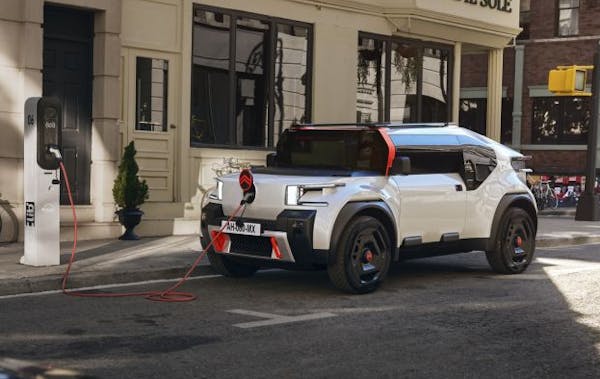
The oli has a number of innovative design features. The bonnet and roof panels are made from recycled corrugated cardboard formed into a honeycomb sandwich structure between fibreglass reinforcing panels. The panels are very rigid, light and strong, and weight is reduced by 50 per cent when compared to an equivalent steel roof construction. The bumpers are made from PolyPropylene containing 50% recycled materials, and they’re 100% recyclable.
Virtually all modern cars have large, bulky and heavy seats, but the oli’s space-efficient front seats, made of recycled materials with ‘mesh’ backrest designs, use 80% fewer parts than the seats in an equivalent SUV – just 8 rather than 37.
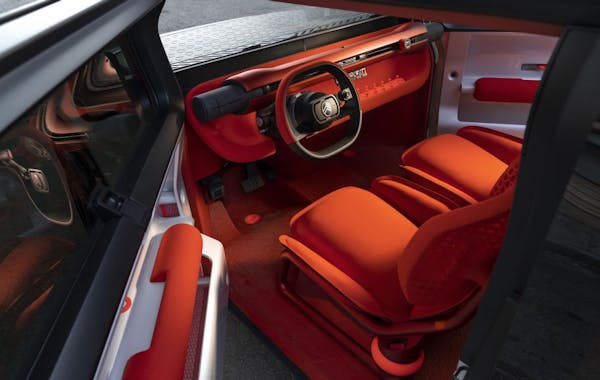
All of the key design elements on the oli are horizontal or vertical. The windscreen is vertical because this means it has the smallest possible height and so uses the smallest amount of glass. As well as reducing weight and complexity, the smaller screen is less expensive to produce or replace.
This vertical windscreen doesn’t look very aerodynamic, but to aid aerodynamic efficiency, the oli features an experimental ‘Aero Duct’ system between the front section of the bonnet and the flat top panel which blows air towards the screen. Citroen says this creates a curtain effect to smooth airflow over the roof.
The simple front doors are 20% lighter than the doors in a typical family hatchback, with around 1.7kg per door being saved by the removal of the loudspeaker, soundproofing material and electrical wiring.
Large, horizontal windows are tilted slightly towards the ground to help to reduce the effects of the sun, and manual ‘flip up’ opening sections, similar to those used on the Citroen Ami, provide ventilation.
Instead of a conventional boot, the oli features a pick-up bed inside the boot. The removable bed panel is light and flat, and made from the same recycled cardboard structure as the bonnet and roof panels.
Aluminium wheels are expensive and energy-intensive to produce, and steel wheels are heavy, so the oli has 20-inch wheels that are aluminium-steel hybrids, resulting in them being 15 per cent lighter than the equivalent full steel wheel, contributing to an overall vehicle weight reduction of 6kg.
The Goodyear Eagle GO concept tyre tread compound is made almost entirely of sustainable or recycled materials, including sunflower oils and rice husk ash silica, as well as pine tree resins and full natural rubber which replace synthetic, petroleum-based rubber.

The oli’s dashboard is also very simple, and therefore lighter weight and less cost than the typical dashboard in virtually all modern cars. It uses just 34 parts compared to the 75 parts in the dashboard and centre console of a compact family hatchback.
There’s a ‘beam’ running across the width of the dashboard with an electrified rail. Infotainment and communication is provided by your smartphone, which is docked in the central socket on the beam. Once plugged in, phone information and apps are merged with essential vehicle data such as speed and charge level. This is made visible via a ‘Smartband’ system, which projects information across the width of the lower windscreen surround.
The same approach is used for in-vehicle audio. Each end of the beam is hollow, and cylindrical Bluetooth loudspeakers can be ‘docked’ to provide high-quality sound for listening to music on the move; 250g of weight has been saved by eliminating the usual audio system.
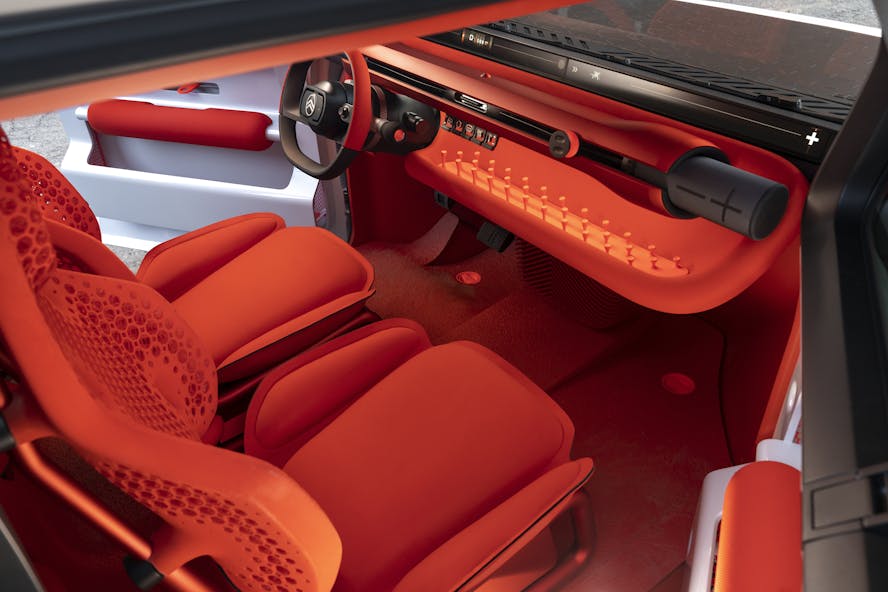
The Citroen oli supports smart ‘Vehicle to Grid’ (V2G) capability, offering the potential for the vehicle to make money for its owner by storing excess energy from home solar panels, and selling this back to energy suppliers, as well as helping to manage power issues when there is peak demand or a power outage in the grid.
The oli also has ‘Vehicle to Load’ (V2L) capability, allowing it to power domestic electrical items or camping equipment.
Let’s hope that the oli concept makes it into production with minimal changes.
